Huntington Park (or “HP” as those of who grew up there call it) is my hometown. I’ve covered one building in a previous video (on the Chili Bowl Restaurant chain), but wanted to return and highlight a few more historic spots around HP.
Our 1st stop is the Lane-Wells Co. headquarters at the corner of Soto and 57th Streets. As a kid, the building always fascinated me with its unique architecture. It was unlike anything I had ever seen. Once I started digging into the history of the building, I found out that Lane-Wells Co. was a key player in the California oil industry and innovated a tool that changed the oil industry worldwide.
In the early 1930s the demand for oil was rising, but oil prices were low. The cost to explore for and produce oil were very high and oil companies needed a more cost-effective way to find more oil.
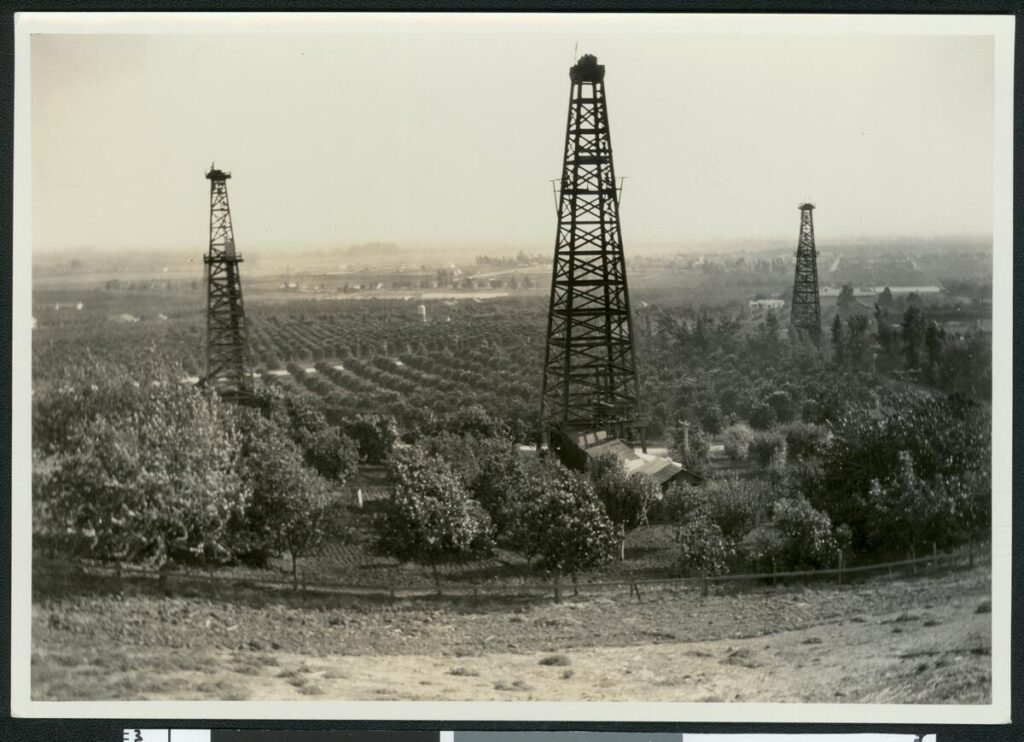
Photo Credit: USC Libraries and California Historical Society.
In 1930 two ambitious oil-field tool salesmen named Bill Lane and Walt Wells came up with the idea for a gun-like tool that would shoot steel bullets through the casing of dry wells in order to extract more oil.
During their research they discovered that a patent for a similar tool already existed, but the design didn’t work. Lane and Wells purchased the patent from the inventor and formed the Lane-Wells Company in 1932 to develop their own gun perforator.
Now I’m not gonna sit here and try to tell you that I know all the details about how this gun perforator worked. In a nutshell, they would lower the tool into a well that was thought to be dry, it would shoot bullets into the sides of the well casing and into the earth, which would reveal oil pockets, which would then cause the well that was previously though to be dry, to produce more oil.
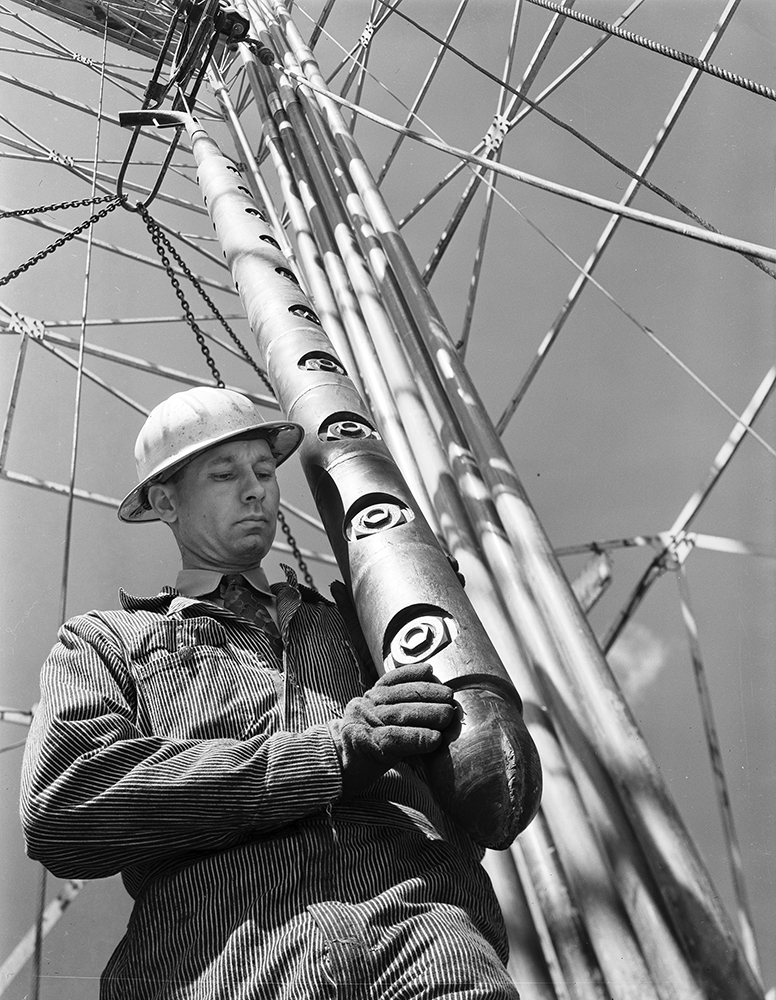
Photo Credit: DeGolyer Library, Southern Methodist University
The first test of their gun perforator was carried out in December of 1932 on a well called “La Merced #17” in Montebello that was owned by Union oil. The perforation brought the well back from producing nothing to 40 barrels of oil a day.
The success of that first test immediately resulted in demand and growth for the company. They expanded their services and established locations in Texas and Oklahoma soon after. By 1935 they had a small fleet of perforating trucks that could be dispatched to wells all over the country.
Their success led Lane-Wells to build a company headquarters and factory on Soto St. in 1938 at a cost of $100,000. The streamline moderne building was designed by architect William E. Mayer, who described the headquarters building as “[having] rounded corners and three large continuous glass areas [that] give the building a strong horizontal feeling, but the tall pylons provide interesting contrasts at the entrance.”
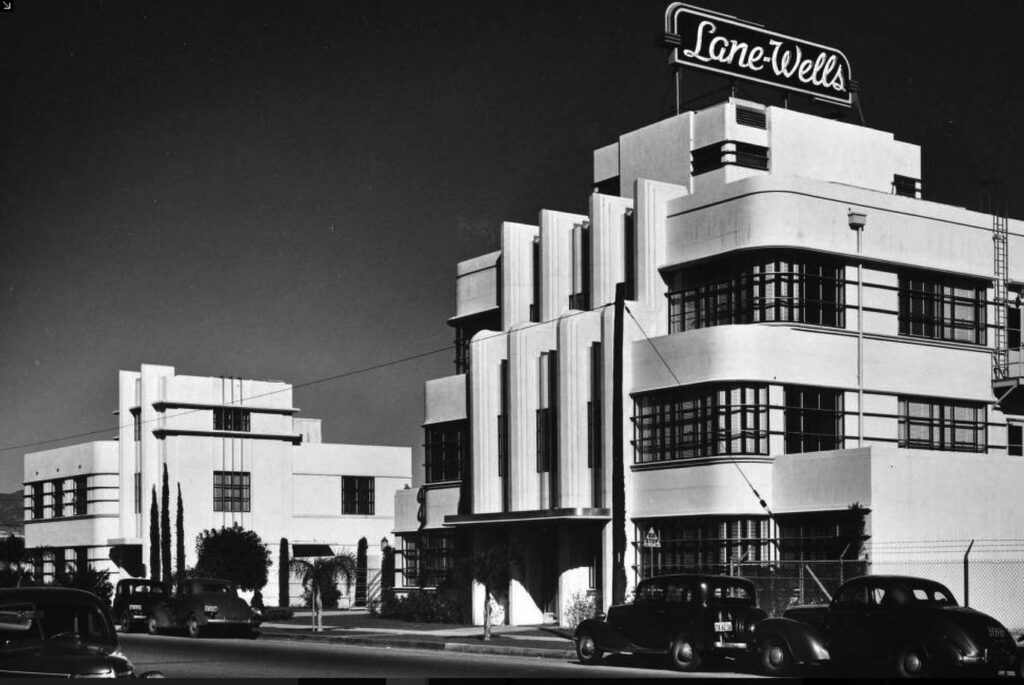
Photo Credit: Water and Power Associates
Lane-Wells continued growing in the following decade, establishing several international locations and continuing to refine their services and the design of the gun perforator. By 1948 the company completed their 100,000th perforating service at the well that started it all, “La Merced #17.”
In 1956 Dresser Industries merged with Lane-Wells and in 1958 Lane-Wells moved their operation to Houston, eventually becoming part of oil giant Baker-Huges, leaving their beautiful streamline moderne headquarters to have a succession of tenants in the ensuing decades.
Today, the building houses The Escarpment, a studio with 2 stages and equipment and prop rentals.
The exterior can definitely use some TLC, but you can still appreciate the streamline moderne architecture of the building. The metal handiwork encircling the rounded windows and the 4 cascading columns that seem to pour over the front entrance of the building.
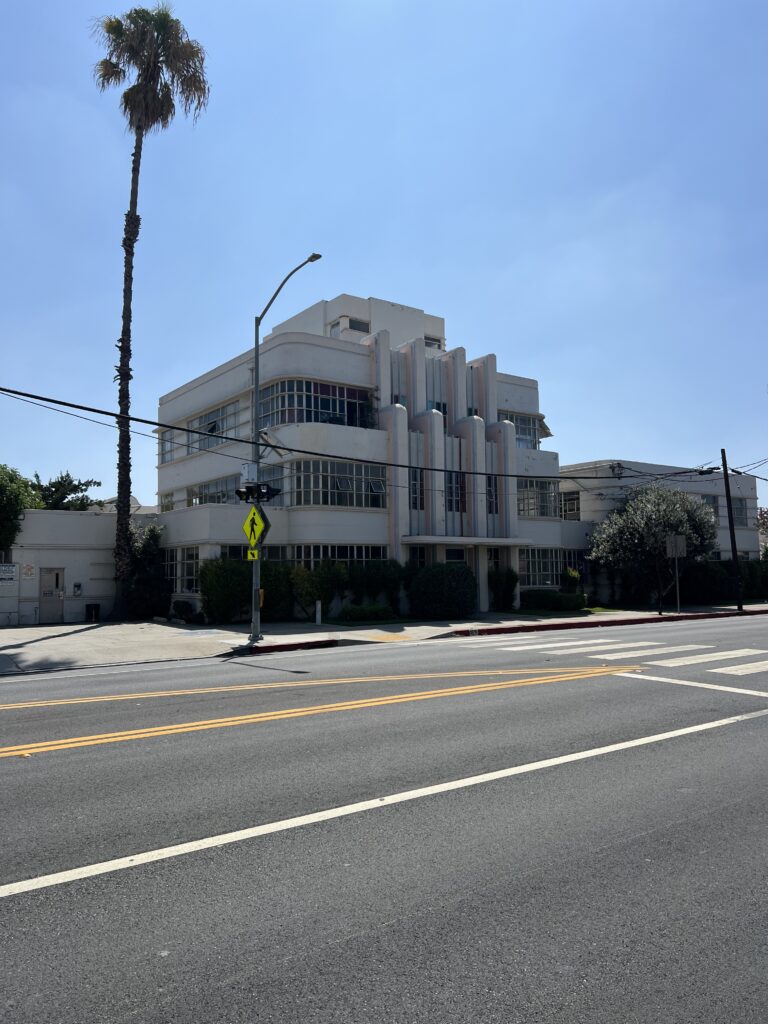
Even though I don’t live in HP anymore, anytime I’m visiting family, I’ll always take a little detour just to check on this building. We don’t have many examples of this type of architecture that still exist and I hope that it’ll be around for a long time.
Our next stop brings us to Pacific Blvd or “La Pacific” as those of us who grew up here call it. This street has always been the hub of the city’s activity, with its significance dating back to the time before Huntington Park was even a city.
The land that would become Huntington Park was once part of Rancho San Antonio, 29,000 acres of land that were granted in 1810 to Don Antonio Maria Lugo. In the middle and latter part of the 19th century, the Lugo family began selling portions of the rancho.
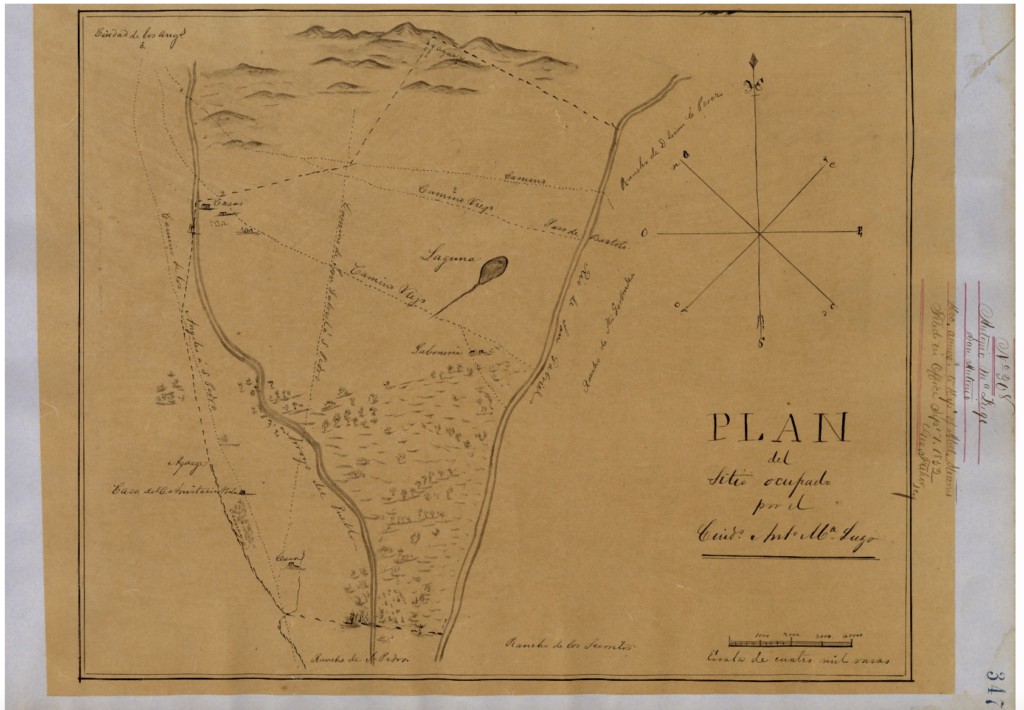
Photo Credit: Cal State Monterey Bay
In 1899 a pair of real estate developers named A.L. Burbank and E.V. Baker began buying up land and by 1901 they controlled a 100-acre tract called the Sunrise Tract. They began subdividing the land and renamed their development to La Park, but in 1902 they changed the name to Huntington Park to entice Henry Huntington to extend a line of his Pacific Electric Railway through the city. Their flattery worked and Huntington extended his Whittier Line in 1903 through the city along what is now Randolph Street.
Throughout all of this development, the road that would became Pacific Blvd was taking shape. The road from the Lugo ranch house to the city of Los Angeles had been well traveled and it was natural for it to become a major street in the city. Water troughs were placed along the stretch of road and many of the important buildings were built alongside it, including the first grocery store in 1903, which also housed the first post office and later, the first newspaper in the city.
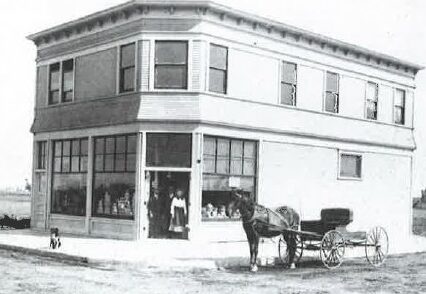
Photo Credit: City of Huntington Park.
Huntington Park’s civic leaders were determined to have Pacific Blvd be a major draw along a thoroughfare from Los Angeles to Long Beach, and they worked with neighboring cities to improve the road’s condition and to secure the right of way from various landowners.
In 1906 Huntington Park was incorporated as a city with a population of 526 and its development, as well as Pacific Blvd’s, continued to grow. In 1909 the Woman’s Improvement Club raised money to build a new cement trough and drinking fountain on Pacific Blvd, which helped bring horse-drawn vehicles from other cities through Huntington Park. By 1911 Pacific had been paved and when it came time to build a city hall in 1914, it was naturally located on the Blvd at the corner of Irvington Ave, which later became Gage Ave.

Photo Credit: USC Libraries and California Historical Society..
By the 1920s Pacific began to take shape as the commercial and entertainment hub of the city, with 2 movie theaters being built less than a block from each other and a 3rd being added on the next block in 1930.
The 1933 Long Beach Earthquake damaged and destroyed a lot of buildings along Pacific, but the Blvd rebounded.
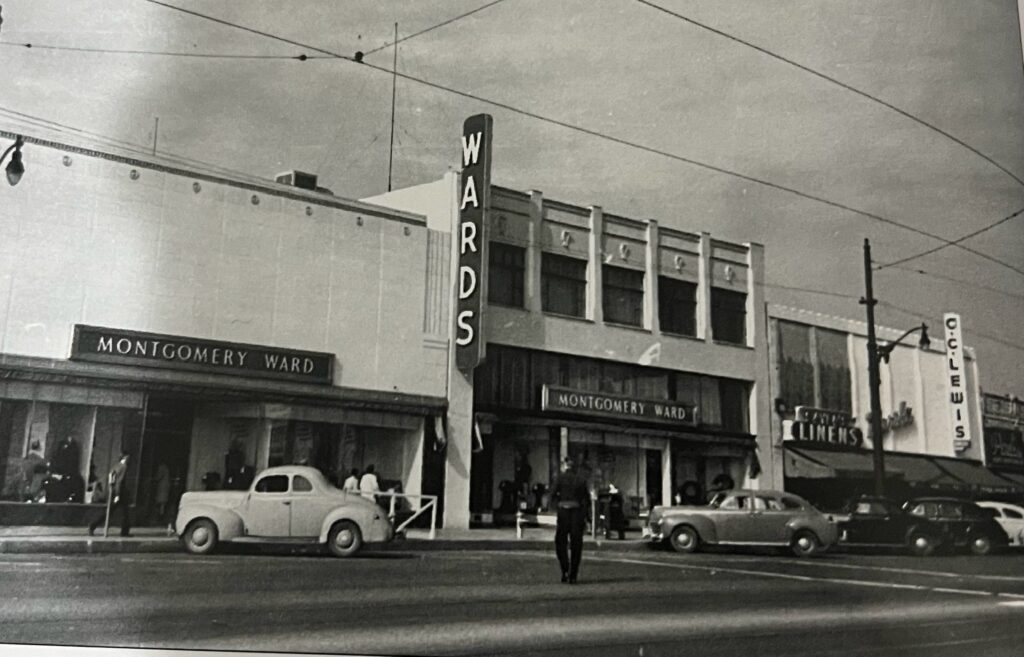
Photo Credit: City of Huntington Park
In 1946 the city’s first Christmas parade was held and the tradition has continued to the present day.
By the 1950s department stores like Woolworth’s, Wineman’s, J.C. Penny, and Montgomery Ward’s opened locations, which made Pacific the hub of retail shopping for Southeast L.A. The city painted banners on its water towers that proudly proclaimed that Huntington Park had “more shops than a shopping center.”
However, by the 1960s Pacific began to experience a decline with the advent of regional shopping centers and air-conditioned malls. The railways that had once made a trip to the city convenient also ceased operations. And, the white working-class residents, which had been the predominant demographic since the beginning of the city, moved away in droves to communities like Cerritos, Downey, and towns in Orange County. Vacancies of storefronts on Pacific rose to 20% and by the 1970s it seemed like the Blvd was on the verge of demise.
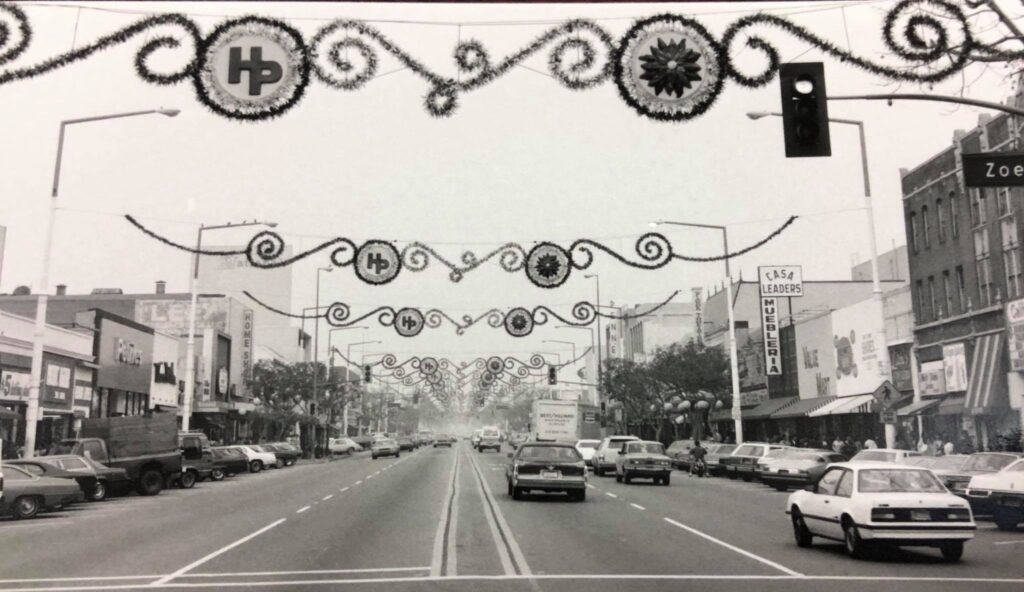
Photo Credit: The Greater HP Area Chamber of Commerce
But in the mid 1970s Pacific was revived by an influx of working-class Latinos and immigrants to Huntington Park and surrounding cities like Bell, Maywood, and South Gate. These new residents tended to shop locally and that infusion of cash soon had Pacific bustling again.
In the 1990s Pacific Blvd became as known for soccer celebrations that sometimes got out of hand as it did for its shopping. But that reputation didn’t stop the Blvd from continuing to flourish, becoming the 3rd highest grossing commercial district in L.A. County by 2008.

However, in recent years, Pacific Blvd has again experienced a downturn. Big-box stores and shopping centers opened nearby. The shift to online shopping also greatly affected Pacific, which has largely been dependent on foot traffic. Additionally, the younger generation and children of immigrants don’t tend to like the same things as their parents did and many of the offerings on the Blvd just don’t appeal to them. And finally, the shutdowns during 2020 were the last straw for many of the businesses.

Today, there is noticeably smaller foot traffic, even on weekends and many storefronts still remain closed. But City leaders have invested millions of dollars into a redevelopment project to give Pacific a facelift and make it look and feel more modern. They’ve installed new street signs, lighting, and trees along the blvd and added a giant electronic billboard at the one end of Pacific.
Civic leaders are trying to find a way to reinvent Pacific Blvd to make it more appealing to younger latinos, while also preserving some of its cultural past, which is a difficult task, but if history has taught us anything, it’s that Pacific Blvd always finds a way to bounce back.
Our next and final stop is Avila’s El Ranchito. As a kid it was always a special treat whenever we got to a chance to eat at this restaurant, which has been serving the community for almost 60 years and is a true American dream story.
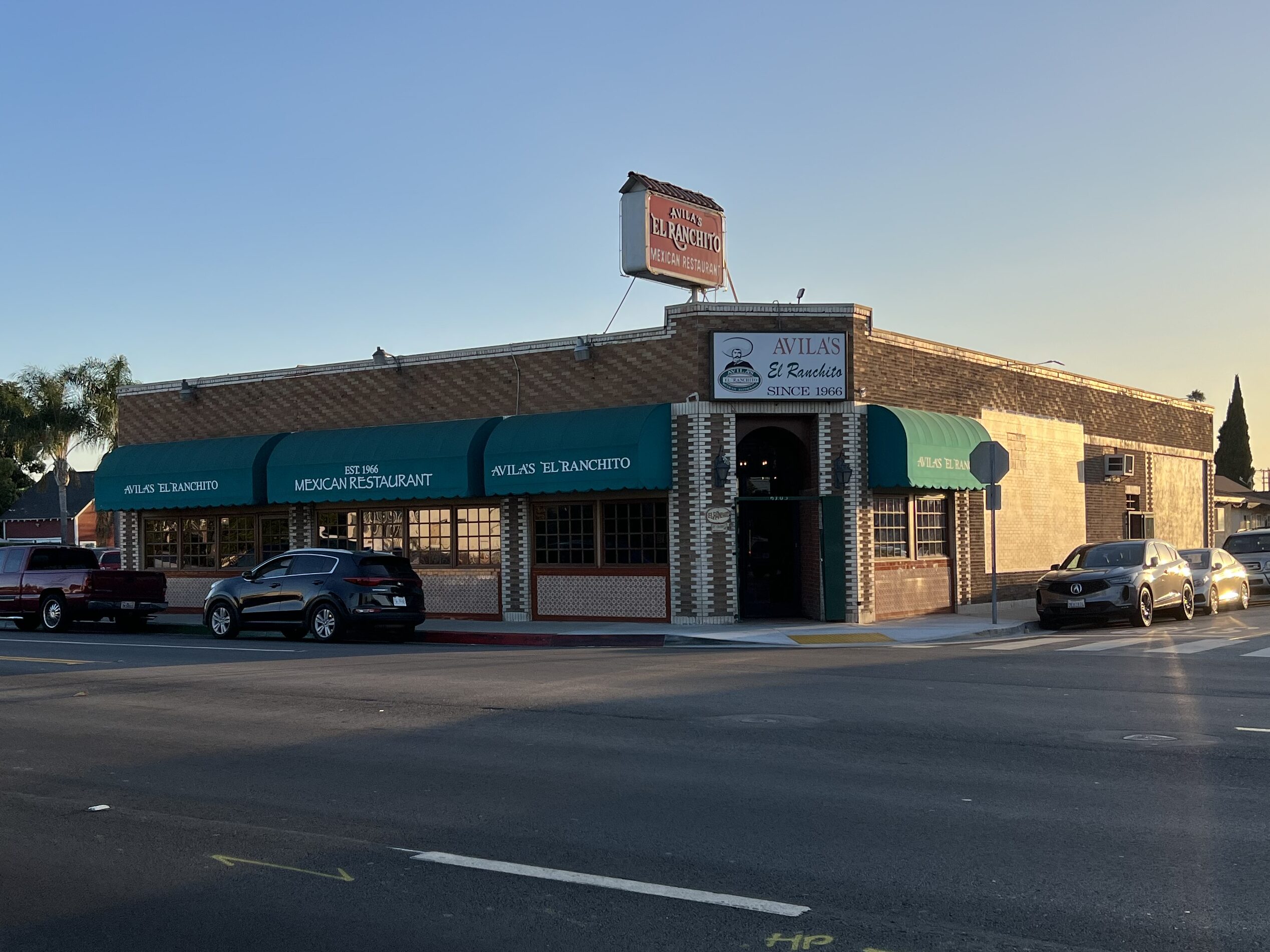
Don Salvador Avila came to the United States as a bracero in the 1940s, working in the fields of Central California. His wife, Doña Margarita stayed in Penjamo, Guanajuato to raise their 6 children. In 1958 the entire Avila family moved to the US, putting down roots in Southeast L.A. where Salvador found work in a foundry.
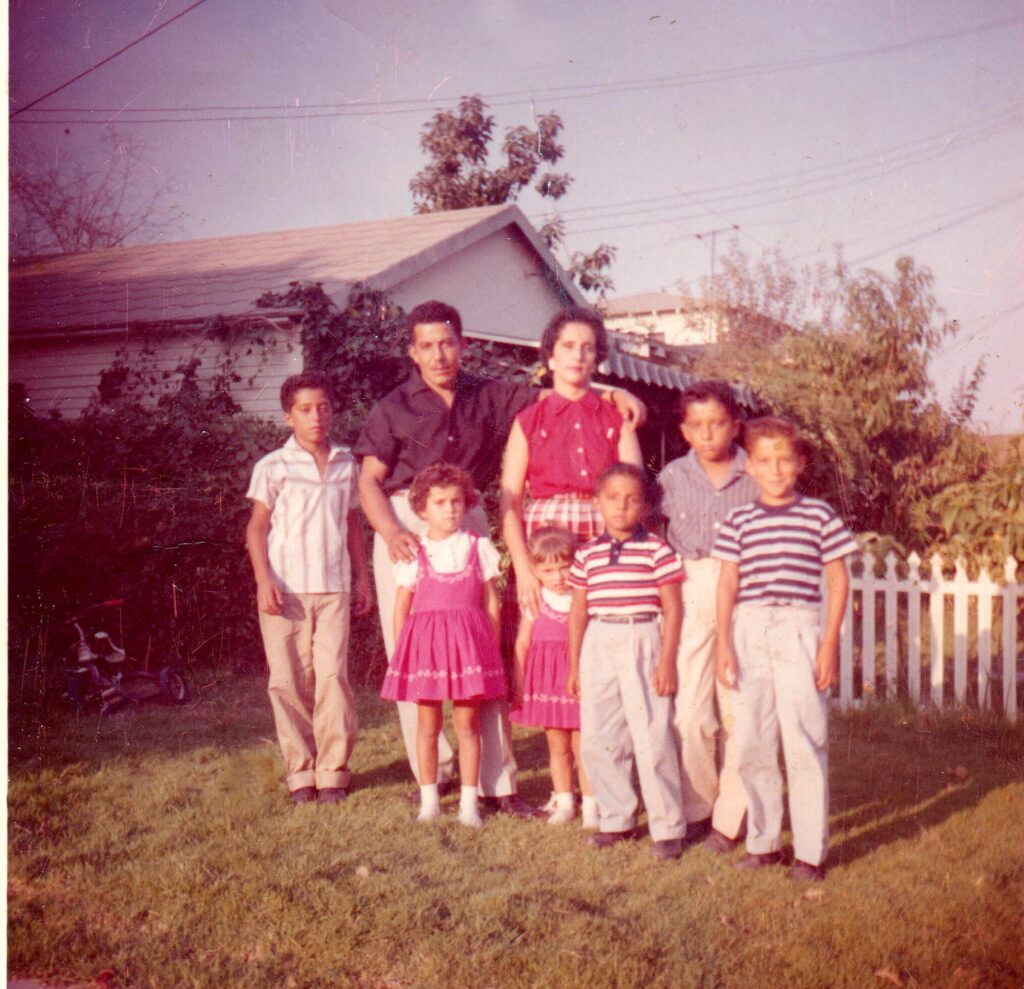
Photo Credit: Avila’s El Ranchito.
A back injury forced him from that job, but also led him to an opportunity that would shape his family’s future.
In 1966 The Avilas bought a failing Cuban cafe next to a liquor store in Huntington Park with a $2,000 loan that was co-signed by Salvador’s uncle. Neither he or Margarita had ever run a restaurant, but they had her recipes and his determination to create a legacy for his family.

The first day they opened, they only made $13, but the family persevered—and it most certainly was a family affair. Margarita’s father washed dishes, while her mother helped her in the kitchen. Salvador would drive 3 times a week at dawn to buy fresh produce in Downtown L.A. and the Avila children would help serve food and clear tables when they returned home from school.

Photo Credit: Avila’s El Ranchito.
The Avilas opened their restaurant at a perfect time, Huntington Park and the surrounding cities were about to go through a dramatic demographic shift, going from majority white to predominantly latino. Many Mexican immigrants became regulars because the cooking reminded them of home.
The Avilas soon bought out the liquor store next door and expanded their restaurant, which had only 5 picnic tables when they first opened.

Photo Credit: Avila’s El Ranchito.
As their children became adults, they persuaded their parents to open more Avila’s El Ranchitos in other cities in L.A. and Orange Counties in the 1970s.
Don Salvador Avila helped his children start their own locations based on his concept, but he didn’t want partners. He lent them the El Ranchito name, seed money, and the menu, but it was up to them to make it work.
As one of his sons said in an interview, “by keeping it that way, we can still have peace in the house and still talk to each other, we don’t have partnership problems.”
Even though the restaurants were separate, the sibling still cooperated with each other to buy in bulk, develop menus, and arrange things like insurance. Each sibling also had a strength that the others could call on for help. This arrangement allowed them keep family unity—a guiding principle that their father Salvador lived his life by.
By the 1980s Salvador and Margarita were able to move to a hilltop estate in Corona del Mar and almost all of their children moved in nearby.
Over the following decades, Avila’s El Ranchito grew to 13 locations, with all but the original one being in Orange County.

Each location is owned and operated by a 2nd or 3rd generation family member. And even though Doña Margarita’s recipes are the foundation of the restaurants, each location caters its menu to its local clientele.
Like Mahi mahi ceviche in Newport Beach, an Ahi Bowl in Laguna Beach, or traditional dishes like Lengua Ranchera at the Original Huntington Park location.
Doña Margarita sadly passed away in 2016 and Don Salvador in 2022, but their legacy lives on. They accomplished the American dream, Don Salvador not only went from bracero to millionaire, but also created opportunities for his children and grandchildren to succeed in this country.

Photo Credit: Avila’s El Ranchito.
So next time you’re in the mood for some homestyle Mexican cooking, why not pay a visit to Avila’s El Ranchito and ensure that the legacy that Don Salvador and Doña Margarita created continues to live on for many more years to come.
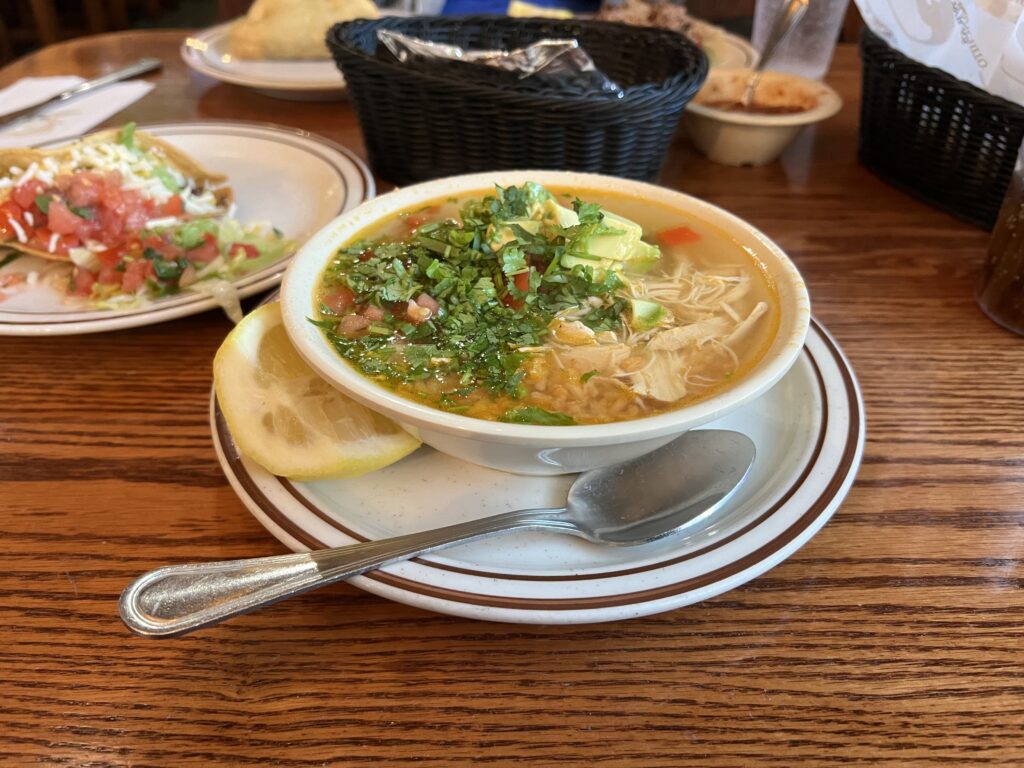
References:
Lane-Wells
“Oil: Shooting it Out” by staff, Time Magazine. Sep. 6, 1949.
“Buildings Still Sport Streamline Legacy” by Susan Vaughn, The L.A. Times. Feb. 9, 1992.
“Book Review: ’75 Years Young-Baker Atlas” by Juan Puente Jr., The Society for Technical Communication. March 13, 2017.
“An Architectural Guidebook to Los Angeles” by David Gebhard and Robert Winter, pg. 294.
“Shoot Through Steel and Rock” by Noel F. Atzmiller, Hart Energy. Aug. 28, 2007.
“The Lane-Wells Story” by Randy Juster, decopix.com March 2, 2016.
Pacific Blvd
“Images of America: Huntington Park” by James M. Kinsey, pgs. 7, 14, 20, 21, 34, 53, and 54
“Street Rebounds as Shoppers Return” by Melinda Burns, The L.A. Times. Sept. 4, 1983.
“Community Profile: Huntington Park” by Monica Valencia, The L.A. Times. Jan. 31, 1997.
“A Street at a Crossroads” by Ruben Vives, The L.A. Times. Feb. 25, 2016.
“Preserving a Working-Class Haven” by Scott Garner, The L.A. Times. Sept. 13, 2018.
“A Tough Pandemic Christmas in a Legendary LA Latino Shopping District” by Leslie Berestein Rojas, LAist. Dec. 23, 2021.
Avila’s
Our Story | Avila’s El Ranchito
“Celebrating 30 Years of Family and Good Food” by John Cox, The L.A. Times. Nov. 20, 1996.
“To Each His Own: Avilas Share Name, Not Ownership, of Family Restaurants” by John Canalis, The L.A. Times. Nov. 28, 1996.
“Hardship was One Woman’s Chance” by Russ Loar, The L.A. Times. Apr. 20, 1998.
“Margarita Avila, 1926-2019: Matriarch of Beloved Southland Restaurants” by Gustavo Arellano, The L.A. Times. Feb. 9, 2019.
“Salvador Avila: Former Farmworker who Became a Restaurant Baron” by Gustavo Arellano, The L.A. Times. Aug. 7, 2022.


Wow you brought back some memories at my first (on the books) job.
In 78 I worked at Wineman’s Dept Store on Pacific and Gage.
I really liked your work on the city of Huntington Park, and sharing a lot that many never new. My future wife worked down the street on Pacific and Florence.
Just a quick little story of our own…
As I worked at Wineman’s I used to hand deliver everyone’s credit statements to the local post office for mailing. Little did I know the postmaster would be my next-door neighbor 21 years later.
My dad also knew many of the El Ranchito Family members.
What a small world.
HP was fabulous.
Wow! Thank you for sharing your memories of HP! Such a small world that the postmaster ended up being your neighbor!